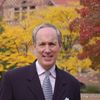From Halloween blackface costumes to football players kneeling during the national anthem to faculty tweets about “white genocide,” this year has seen much confusion and misunderstanding on college campuses regarding where to draw the line between first amendment free speech rights and sanctionable harassment. History can help. The right to free speech has been fundamental to the protection of our democracy and the freedoms we enjoy. History records, too, that without a robust intellectual and practical respect for free speech in the United States, we would not have achieved the understanding, learning, and gains that came out of the McCarthy era, the civil rights movement, the Vietnam war protests, and the union movement.
The First Amendment free speech clause historically has been interpreted by the Supreme Court steadily and nearly absolutely to apply to public entities. Exceptions, carved out by the Court, are limited and narrow, including 1) defamation, 2) obscenity, 3) criminal conduct, 4) and where there is a “clear and present danger” to incitement of harm, injury, and violence. As a consequence, if the speech and expression do not fall into one of these exceptions, the First Amendment bans censorship or regulation placed on the activity.
From the viewpoint of the public campus, there is an obligation to promote and protect robust speech opportunities, without censorship or retaliation, as well as to ensure that the speech is not disrupted. Foundational to this notion is that campuses are a “marketplace of ideas,” where each person can discover, listen, learn, and make up one’s own mind by being exposed to numerous viewpoints. Without this freedom of inquiry on campus and in society at large, true freedoms of thought and advancement cannot be achieved.
While this understanding of free speech may go back at least as far as the Enlightenment era, it seems for some parties this constitutional imperative is hard to reconcile and harmonize with current issues of inclusion, equality, hateful and hurtful speech, and intolerant words. In response, campus reactions have varied, resulting in confusion and controversy. Few have been seen as a model campus for balancing these difficult conflicting issues – all of which also play out in larger society.
Often colleges have established Bias Response Teams to address the challenges that arise when the speech is viewed as repulsive, rude, offensive, or hateful. In many cases, the bias team response, in turn, has been attacked as chilling speech or illegally regulating protected speech. These bias response approaches are laudable in their intent, but may run counter to First Amendment speech protections. One approach to reconcile the need to protect speech on the one hand and maintain a tolerant campus on the other is to ensure that the institution’s response is one that focuses on education, positive dialogue, collaborative understanding, and harmonizing the perceived competing values on campus. The institution’s first response through its Bias Response Team ought not be to open up a formal investigation designed for disciplinary sanctions. As educational institutions first, we should promote at every opportunity a learning environment that facilitates and engages positive conversations toward advancing better learning and understanding, not punishment for one’s protected speech.
While this balance is difficult and often delicate, especially when there are sharply held opinions, it is essential that the campus reaffirm with its actions and procedures that it is a place of open and free inquiry that leads to better analysis and discernment of the issues and ultimate understanding, while upholding the important First Amendment rights and values on which our democracy rests. If the speech and expression do not squarely fall within one of the four exceptions to the free speech clause, the public institution’s responsibility is to step up and protect that expression even if it may offend and cause upset to members of the university community. Hate speech codes, adopted by many universities, under present interpretation are constitutionally suspect unless the challenged speech crosses over to incitement or threat of likely and immediate injury or harm due to violence. If these facts are proven, the challenged speech falls within the “fighting words” exclusion. This narrow exception has been strictly construed by the courts, arguably leaving little room outside these parameters for campus codes to be found lawful. As Justice Oliver Wendell Holmes and others eloquently have observed, the way to challenge and overcome bad speech is with better, more persuasive speech.
When we look back on history, so much of our democratic progress and learning have been achieved through rigorous debate and dissent, some unpleasant. Nevertheless, without a rigorous enforcement of the First Amendment speech clause, rights and values and progress as a society would not have been as successful as they have. Without these protections, the next time there is a challenge, censorship and regulation may chill or block another person’s viewpoint, a viewpoint that through positive dialogue could have led to a deeper, clearer understanding of the issues or misunderstanding under discussion.
As Timothy Garton Ash notes in his recent book, Free Speech: Ten Principles for a Connected World, freedom of speech, like the important overarching principle of the rule of law, protects minority viewpoints as well as dominant opinions from censorship and silence. As we think about the important platform that the First Amendment serves for our evolving democracy in this complex world, we should recall the words attributed to Dr. Martin Luther King, that silence has its costs.
